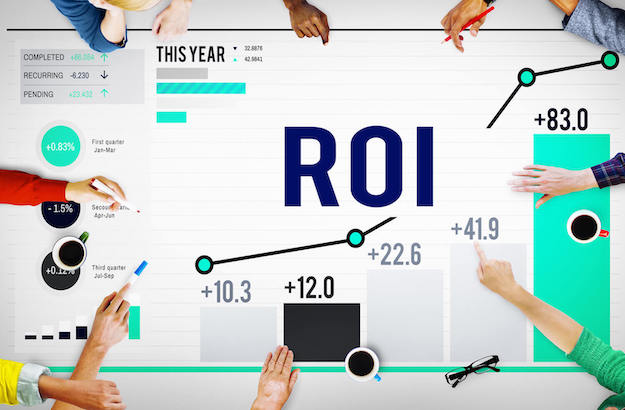It’s easy to throw money into a search engine campaign, social media marketing, or new website design, but it’s not so easy to see whether or not those investments are paying off. How do you know what’s working and what’s not? How much of your marketing budget should be going toward these things, and how can you tell if you’re getting a good ROI? Fortunately, there are ways you can keep track of your digital ROI – which will help improve your business.
Determine Your Goals
It is imperative that you demonstrate to upper-level management how your digital marketing efforts generate profits for the company. There is an allure to establishing ROI, but what if ROI isn’t the only measure your organization should employ in evaluating the effectiveness of your efforts?
Before implementing and measuring your campaigns and initiatives, you must first establish your specific marketing goals. You can’t expect a return on every dollar you spend on digital marketing.
Lead generation and clicks, for example, can be tracked, but there is no monetary value attached to them to demonstrate return on investment. It is impossible to gauge the success of your marketing activities if you only focus on money.
Make Sure You are Tracking the Right Metrics
Identify your goals, and then create a formula to measure your ROI. You should track each metric separately. To ensure the best ROI, use multiple channels to measure your ROI. For example, you can track website traffic by day, week, or month.
An excellent way to measure conversions is to track the number of users spent on a page. Average order value is another important metric to track. An increase in average order value can lead to thousands of dollars in new revenue.
According to Harvard Business Review, this metric can provide a better user experience and showcase cross-sell and up-sell opportunities. Finally, customer lifetime value is an important metric to track to determine your digital marketing efforts’ success. It tells you how much the average consumer will spend over the life of that customer.
Brainstorm All the Ways Customers Could Engage with Your Brand Online
Your brand’s social media presence should be a welcoming place for your customers to share their experiences with your business. This doesn’t mean that you should limit your brainstorming to social media. You can also try offline activities. If you have a brick-and-mortar business, you could host a behind-the-scenes video or a phone call with a customer service representative.
Determine Which Metrics are More Successful
While the average conversion rate is an essential digital marketing metric, other metrics are to consider. This allows you to compare the conversion rates from different sources of traffic to determine which channels are bringing the most customers. You can also look at conversion rates by a device to see where you may be missing out on opportunities.
Choose a Tool to Easily Track the Metrics
By comparing conversion rates from different channels, you can determine which initiatives and channels are most effective for you. For example, organic search traffic means your SEO efforts are working, and referral traffic means that your content marketing and link-building campaigns are also working.
Google Analytics can provide you with information on which sources generate the most traffic for your website. The amount of website traffic, cost-per-lead, search page ranks, and shares of your Facebook or Instagram posts directly correlates to digital marketing ROI.
These key performance indicators (KPIs) show whether or not your digital marketing activities are succeeding in bringing in new clients and converting them into paying customers.
A good rule of thumb is to focus on customer lifetime value. This metric can show you the average amount of money spent by a consumer using a digital spending calculator. Thus, increasing the average order value can generate thousands of dollars in new revenue.
Moreover, you can also use it to understand the value of a customer. By understanding their lifetime value, you will know how much they are worth to your business.
Conclusion
Thanks to the power of the internet and its ability to consolidate data, you can track your Digital ROI with just a few tools. If you’re looking to make a more significant impact online with your business, these tools are well worth exploring.

